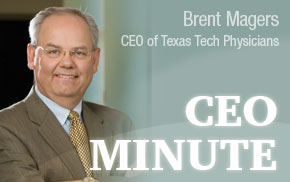 I was impressed to see the venerable Richard Lampe, M.D., chair of pediatrics, walking
down the halls of UMC recently with one of his patients and the child’s mother. I
could not help but overhear the little girl ask Dr. Lampe, “Are there toys in the
place where we are going?” Dr. Lampe grinned and said, “No, not in the room we will
be in, but right outside the room, I think there are some toys.”
I was impressed to see the venerable Richard Lampe, M.D., chair of pediatrics, walking
down the halls of UMC recently with one of his patients and the child’s mother. I
could not help but overhear the little girl ask Dr. Lampe, “Are there toys in the
place where we are going?” Dr. Lampe grinned and said, “No, not in the room we will
be in, but right outside the room, I think there are some toys.”“Oh, man,” the little girl said. Dr. Lampe grinned again.
I was impressed with the easy rapport that Dr. Lampe had with his patient and her mother, as well as his friendliness toward them and his willingness to answer his patient’s question about toys. Patients and their families want physicians who are gifted in diagnosis and treatment, but who are also caring individuals. This is why our vision statement says, “compassion and knowledge.” It takes both to make a great physician and to provide patient-centered humane care.
An Institute of Medicine report, "Crossing the Quality Chasm: A New Health System for the 21st Century," highlighted the benefits of patient-centered humane care — care that is respectful of and responsive to patients' needs, values and concerns. But, the idea of caring for the patient is hardly new. It is captured in the statement from the 1920s by Francis Peabody, M.D., who wrote, "the secret of care of the patient is caring for the patient."
And some days that is just answering the question, “Are there toys there?”
